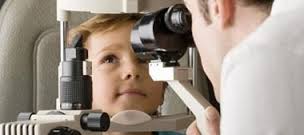
“The cure cannot be limited to freedom from cancer, but must also afford childhood cancer survivors the same physical and psychological quality of life enjoyed by their healthy peers,” says Prof. Michael Weintraub, Director of the Hadassah Medical Center’s Department of Pediatric Hemato-Oncology.
Over 95 percent of children are cured of a malignant eye tumor called retinoblastoma (RB). But what quality of life do survivors of this childhood cancer have? This is a question that Hadassah is researching with the ultimate goal of designing an intervention program that will address the deficits these children experience.
As Prof. Weintraub explains: The side effects of the various treatments may have psychological and social consequences– impaired self-esteem and body image, as well as lower academic achievements. Hadassah is devoted to delineating those areas in which the quality of life for these cancer survivors has been compromised, either by the disease or treatment.
RB is a malignant eye tumor that occurs exclusively in infants and children. In some children, only one eye is affected; in others, both eyes have RB. Approximately 40% of the cases are hereditary. Typically, children are diagnosed within the first two years of life. A mother may, for example, be alerted that her toddler has a problem when he begins crawling into objects, rather than around them.
Long-term survivors of retinoblastoma who have received radiation therapy at an early age develop a typical deformity of their facial bones and soft tissues (midfacial hypoplasia). There is also loss of vision, due either to loss of one eye or varying degrees of decrease in visual acuity, caused by the tumor or treatment.
In the initial phase of a research study carried out in collaboration with Dr. Naomi Weintraub from the School of Occupational Therapy and Prof. Jacob Pe’er, Chairman of the Department of Ophthalmology, the team conducted a comprehensive assessment of the quality of life in a group of children cured of retinoblastoma. After investigating their physical, emotional, social, and academic well-being, they found that these children had lower self-esteem and poorer emotional health as judged by their parents, as well as a lower quality of life at school.
The second phase of the study is currently assessing body image and vision-related deficits in motor function and coordination. Since patients with retinoblastoma often undergo removal of the affected eye, even though the child is cured of the cancer, the impact appears to be significant on the young patients’ self-perception, with social and interpersonal adverse consequences. At the same time, the cancer survivors may experience vision-related impairments in motor function and coordination since removal of the eye puts them at risk for impairments in this domain.
Once all the data is analyzed, Hadassah will design the comprehensive intervention program that will address these deficits in quality of life, body image, and vision-related motor function and coordination.
